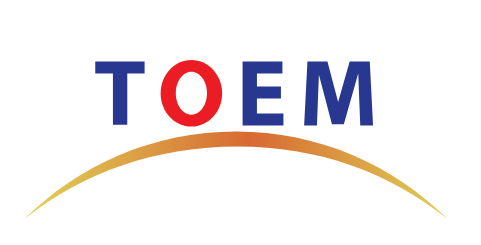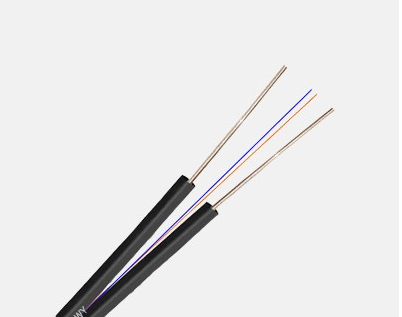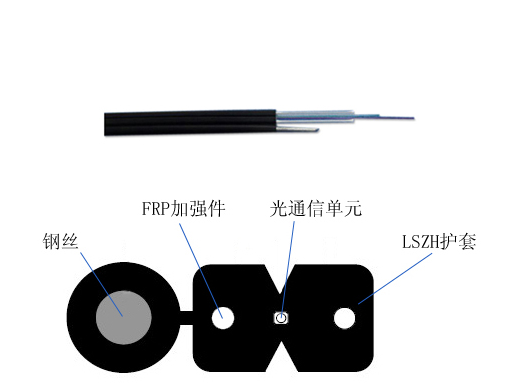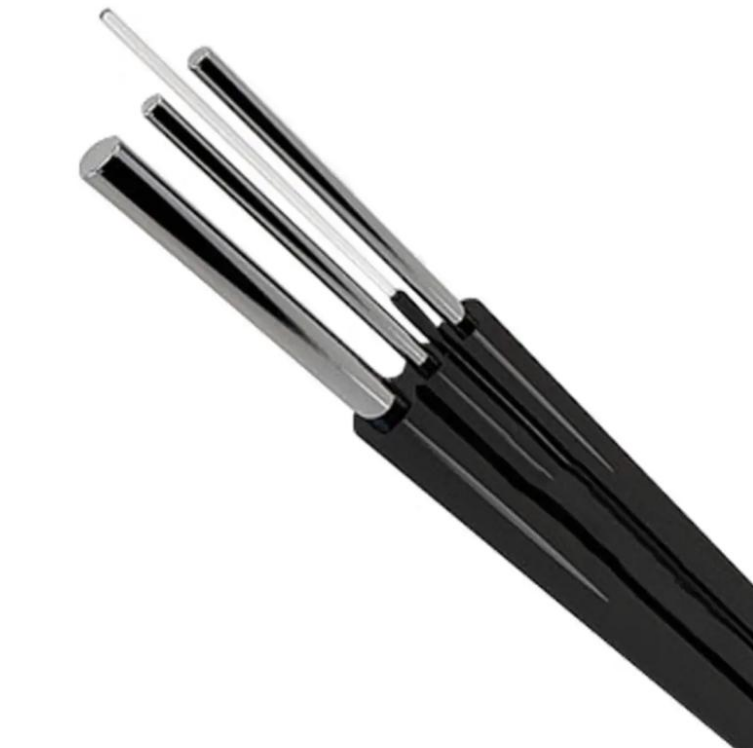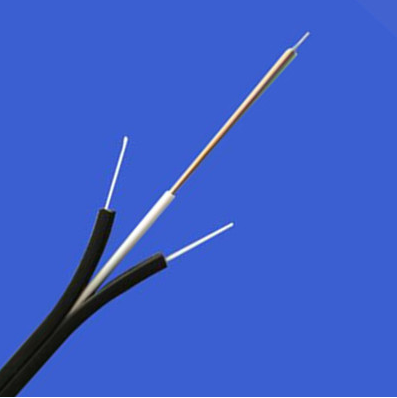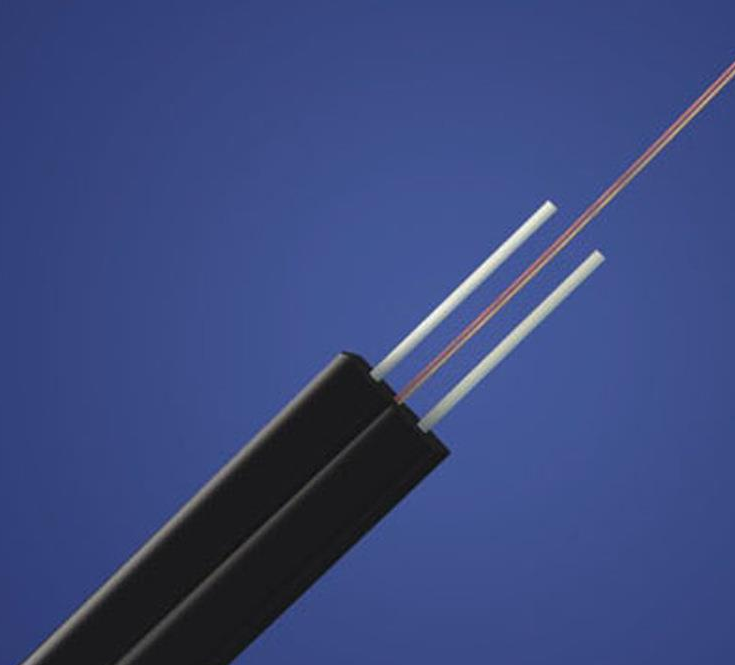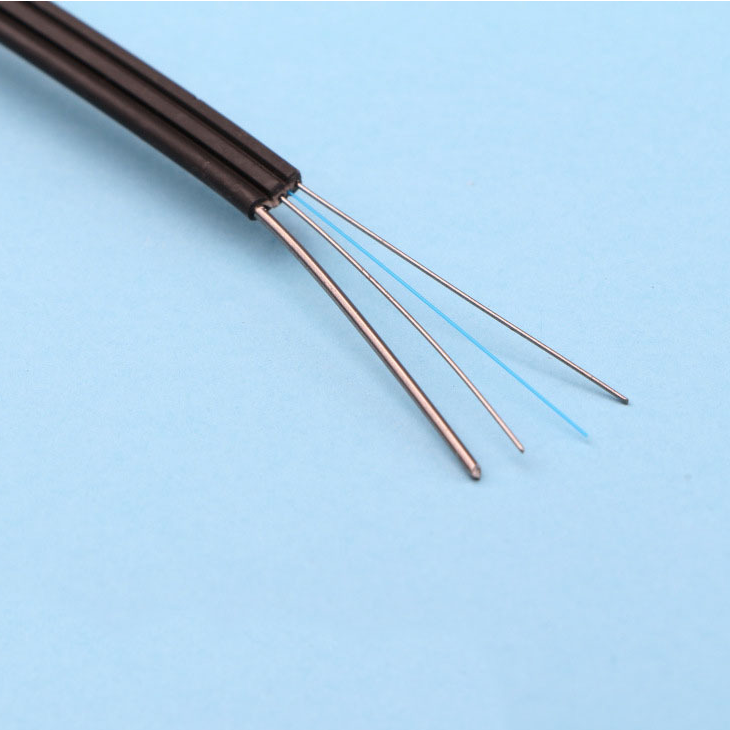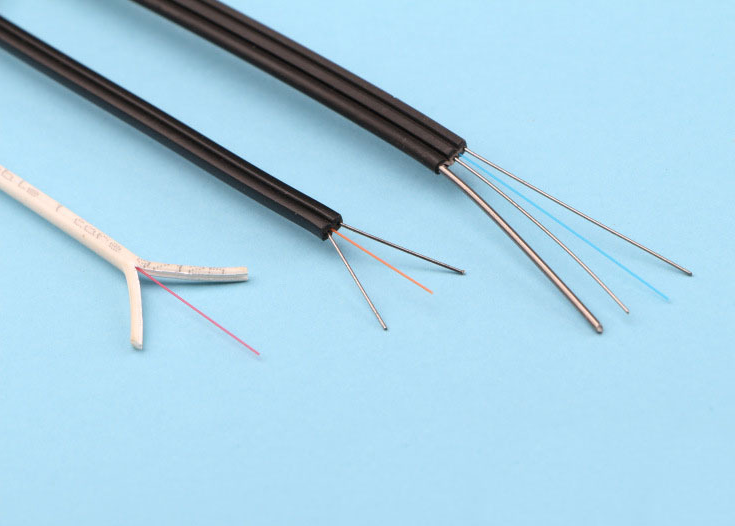Shanghai Gengyun Industrial Co., Ltd
Bow Type Drop Optical Cable For Access Network
TOEM Indoor FTTH bow type drop optical cable is protected by two parallel strength members made of KFRP/steel wire, to ensure good performance of anti-electromagnetic and crush resistance. It keep the safety of indoor cabling system by a durable and flame-retardant jacket LSZH. The Self-Supporting Bow Type Drop Optical Cable is designed with a small meter for easy splice, installation, and maintenance. Featured in butterfly-shaped and flat design, it obviously makes drop cable structure simple and light weight.
TOEM No.T-FC001 drop optical cable consists of an optical communication unit, reinforcement components, and an outer sheath. Among them, the reinforcement is set on both sides of the optical communication unit. And the outer protective sleeve is wrapped outside the optical communication unit and the reinforcement.
Model T-FC001 introduces indoor optical cables by placing the optical communication unit at the center, placing two parallel metal or non-metal reinforcement elements on both sides, and finally extruding black or colored low smoke halogen-free sheaths to form the cable.
2> Strengthening components can be divided into metal and non-metal types. One can be installed on each side of the optical communication unit, or additional components can be installed vertically. The outer sheath is made of black or colored low smoke halogen-free materials, which can meet the EC332-1 standard.
Application
1. Indoor Fiber Optic usually used for Access network;
2. Fiber to home(FTTH),fiber to the room (FTTR);
3. Bow Type Drop Optical Cable is ideal for short and long haul backbone applications and can be installed in-duct or direct-buried;
4. Constructed with 1/2 fiber counts with G652D and G657A for options.
Feature
1> Special bending resistant optical fibers provide greater bandwidth and enhance network transmission characteristics;
2> Two parallel strengthening elements provide excellent compressive performance for the optical cable, protecting the fiber optic cable;
3> Drop optical cable have a simple structure, light weight, and strong practicality;
4> Unique groove design, easy to peel off, convenient for connection, simplified installation and maintenance;
5> Low smoke halogen-free flame retardant sheath, environmentally friendly;
Product Parameters
structure parameter
| Fiber Optic Cable Specification | Number of Cores | Fiber Optic Cable Size (mm) | Reference Weight of Optical Cable (kg/km) |
Tensile Strength Long-term/Short-term (N) |
Flattening Force Long-term/Short-term (N/100mm) |
Bending Radius Dynamic/Static (mm) |
| GJXFH-1Xn | 1 | (20±0.1)×(3.0±0.1) | 8 | 40/80 | 500/1000 | 40/20 |
| GJXFH-2Xn | 2 | (20±0.1)×(3.0±0.1) | 8.5 | 40/80 | 500/1000 | 40/20 |
| GJXFJH-1Xn | 1 | (20±0.1)×(3.8±0.1) | 9 | 40/80 | 500/1000 | 40/20 |
| GJXFDH-4Xn | 4 | (20±0.2)×(4.0±0.2) | 10 | 40/80 | 500/1000 | 40/20 |
* Storage And Usage Temperature: -20ºC~+60ºC
Optical Characteristics
| Type of Fiber Optic | Attenuation | Full Injection Bandwidth | Effective Mode Bandwidth | 10G Ethernet Link Length | Minimum Bending Radius | |||
| Condition | 1310/1550nm | 850/1300nm | 850/1300nm | 850nm | 850nm | / | ||
| Typical Value | Maximum value | Typical Value | Maximum value | |||||
| Unit | dB/km | dB/km | dB/km | dB/km | MHZ.km | MHZ.km | m | mm |
| G657A1 | 0.36/0.22 | 0.5/0.4 | –= | -== | — | 10 | ||
| G657A2 | 0.36/0.22 | 0.5/0.4 | — | — | — | 7.5 | ||
| OM3 | 3.0/1.0 | 3.5/1.5 | ≥1500/500 | ≥2000 | ≤300 | 30 | ||
| OM4 | — | — | 3.0/1.0 | 3.5/1.5 | ≥3500/500 | ≥4700 | ≤550 | 30 |
With the rapid development of communication services, people are constantly demanding the transmission and switching capabilities of communication networks, and traditional access methods can no longer meet the bandwidth requirements. During the last mile of access from the main network to residential areas and households, the copper wire bandwidth can only reach 1 to 2 megabytes, but with the use of fiber optics, the bandwidth can easily reach up to 100 megabytes per second. Fiber to Home (FTTH), which directly uses fiber optics to connect communication lines from the office end to the user’s home, has unparalleled advantages in bandwidth and can achieve comprehensive access to multiple services. As the ultimate solution for broadband access becomes increasingly mature in technology and market conditions, FTTH will become the future of communication.
Technical advantages
- Supports the integration of broadband, limited television, and telephone networks
- High bandwidth, easily reaching up to 100 megabytes
- Flexible network structure, reduces operational construction and maintenance costs, and facilitates management.
- Device port utilization is high, making it easy to connect to the increasing number of users and gradually expand capacity
- Support the access of more network value-added services in the future
